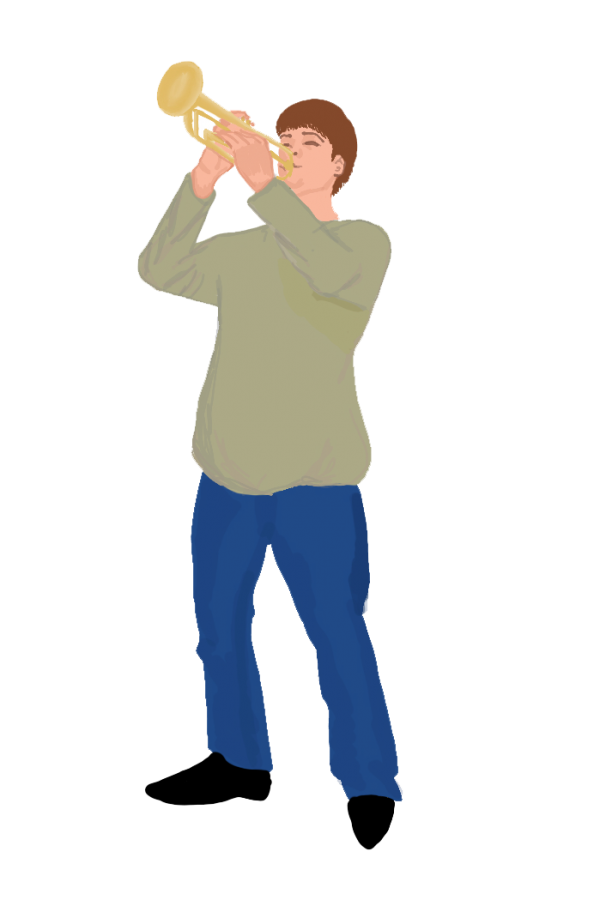Music education leads COVID chorus
October 20, 2020
If this were a normal year, vocal ensembles would be readying for an annual fall choir concert. The marching band would be in the middle of performances at football games. Jazz band, concert band, and orchestra would be preparing for concerts at the end of the quarter.
Amid the COVID-19 pandemic, music programs, and classes at ETHS look—and sound—different.
The concerts are canceled. Those who attend choir in-person stand six feet apart joining in song outside, their voices muffled by face masks. Instead of gathering in the community playing music, students are sounding the trumpet or tapping their drumsticks while on Zoom. Aviva Rappoport, a freshman concert band student, voices a frustration of practicing online.
“A big thing about a band is that you get to socialize and it’s fun. With this, you can’t hear yourself play with everyone because everyone has to stay on mute,” explains Rappoport.
Silent rehearsals have been a challenge for both students and teachers. The latency between all the members of an ensemble will always be present and this has to do with the internet speeds of all the participants, one of the reasons why virtual practice sessions must be muted.
“Over Zoom, the challenges are pretty obvious in that no singer can be unmuted. So it’s basically a completely silent rehearsal. The only way we can hear what we sound like as a group is by each student individually submitting a recording of them singing, and then I mesh all of the audio together,” Director of Choirs Sarah Zegree says.
Zegree has been conducting her classes in-person, as well as offering a virtual option for singers who can’t come to the school.
All music students meeting in person are following the social distancing rules as well as completing a COVID screening before entering the ETHS campus. Teachers take students’ temperatures just to make sure they don’t have a fever even if they aren’t experiencing any symptoms. Also, students are required to wear masks for the full duration of the rehearsal.
Celeste Gaytan-Cabrera, a singer in the Dazzling Dames and Chorale choirs, expresses an issue with wearing masks while singing.
“With the masks, you can’t open your mouth all the way, or else, the mask would fall off. There are some things that make it not as good as it was without the pandemic, but it’s the best we can do right now,” Gaytan-Cabrera says.
Although there have been struggles for learning music during the pandemic, there is a silver lining: more time to practice.
“You have a lot of time to practice because you have nothing else to do. We’re all inside. I think the flexibility is nice, and I like playing music,” says Rappoport.
Teachers have had to be quick on their feet in order to make the best of a challenging situation so they can provide students with a good learning experience.
Haley Sullivan, associate director of bands says that the University of Colorado Boulder and the University of Maryland discovered that using bell covers on instruments and wearing face masks helps to reduce airborne droplets in the air.
“I think it’s really cool to see how creative my colleagues have become. We have learned about new techniques. We have endeavored to do these virtual concerts that we never knew how to do before,” Sullivan comments.
Sullivan has been running her curricular classes online. The marching band, jazz band, and band camp were able to meet in-person in small groups. When the weather turns at the end of the month, all of the bands will be remote.
Additionally, music programs have been limiting the number of people that can join.
None of the groups can have more than 25 students, and both of the vocal groups that attend in-person have no more than 12.
Even though all concerts are canceled, the bands and choirs at ETHS are planning to have students record themselves playing their instruments or singing in the comfort of their own homes. Then, teachers will take all the audio tracks and blend them so it sounds like the group is playing music in harmony.










